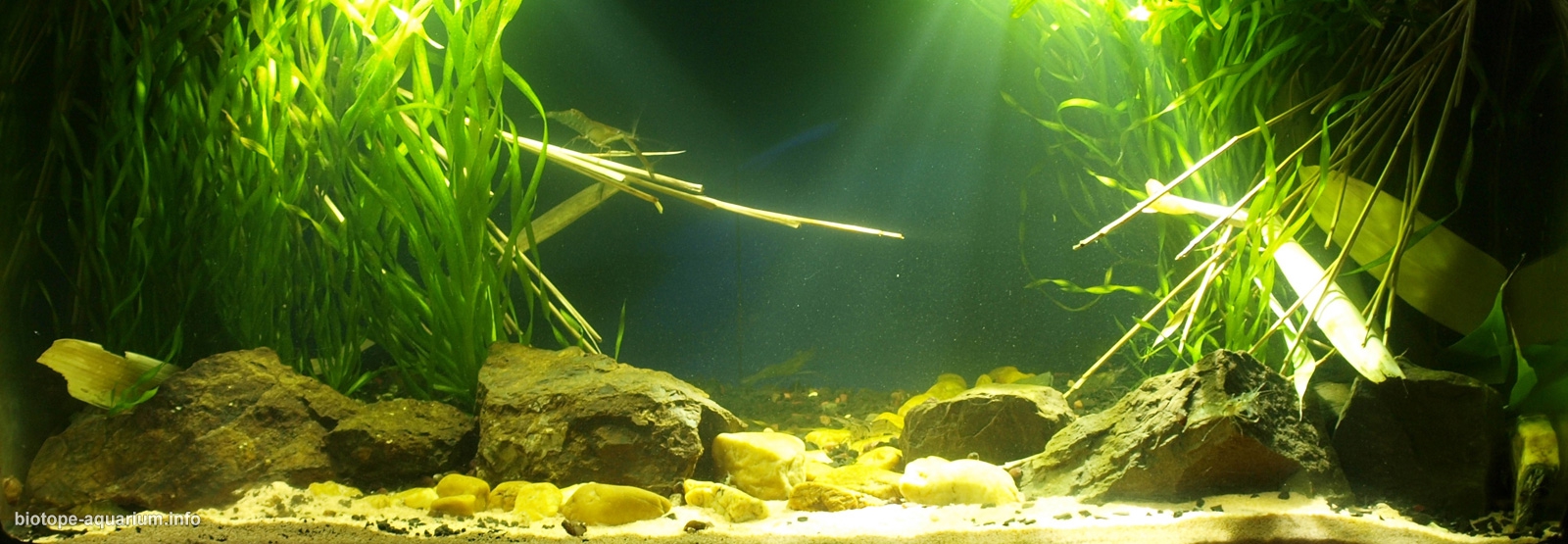Stream near Lake Biwa
The 32nd place in the qualifying stage of the Biotope Aquarium Design Contest 2014
![]() Russia. Tamara Davidova
Russia. Tamara Davidova

Volume: 90 L
List of fishes: Macrobrachium nipponense
List of plants: Vallisneria americana var. biwaensis
Biotope description: Most aquarists unfairly pay little attention to the arthropod inhabitants of the aquarium, but to watch them is no less interesting than fish. The aquarium was set up based on biotopes of small streams near Lake Biwa, Japan. Small, slow-moving streams near the lake have a lot of bamboo and cane along the banks. There are higher aquatic plants here: groups of Vallisneria americana var. Biwaensis, except in Japan, is found only in Haiti and in some waters of Venezuela. This kind of Macrobrachium is often the only notable representative of aquatic animals, but is found here in abundance, eating lower aquatic vegetation and rotting remains of leaves.

This is my 4th place, although it is very well done, and practically as I have encountered it in affluent creeks of this large Japanese lake, some fishes living here endemic in these streams are missing in this biotope, e.g. the Ko-Ayu (Plecoglossus altivelis) is in every stream, also the bottom dwelling Sarcocheilichthys biwaensis, Rhinogobius spp., etc.

Although not terribly complex the décor, planting, livestock choice, lighting and photography do set the biotope scene for the viewer and offers a view of an underwater world.

In this entry there are only shrimps. But they are large and many. Technically the biotope is set up correctly: it is a creek that is shown in cross section. In the center there is a channel without plants, and on the edges there is Vallisneria, where shrimp live and can hide.

The concept for this biotope is sound, and it has been well-researched. From the front, the biotope appears quite natural with light imitating shafts of sunlight piercing the surface to illuminate tussocks of Vallisneria americana var. biwaensis and fallen twigs and leaves of bamboo, just as one would expect of this stream in the wild. The biotope-correct Macrobachrium nipponense appear active and healthy. Having a dark background provides a pleasant contrast with the bright green Vallisneria and pale bamboo leaves, and the rocks embedded in the sand look natural. However, on closer inspection there are a few issues – the larger, darker stones do not match the smaller, lighter ones in colour, texture, or contours and so look a bit artificial due to the discrepancy. Likewise, from another angle we can see a blue background and some kind of dark gravel in the plant sections that is in stark contrast to the lighter sand in the front, so the illusion breaks down here.
